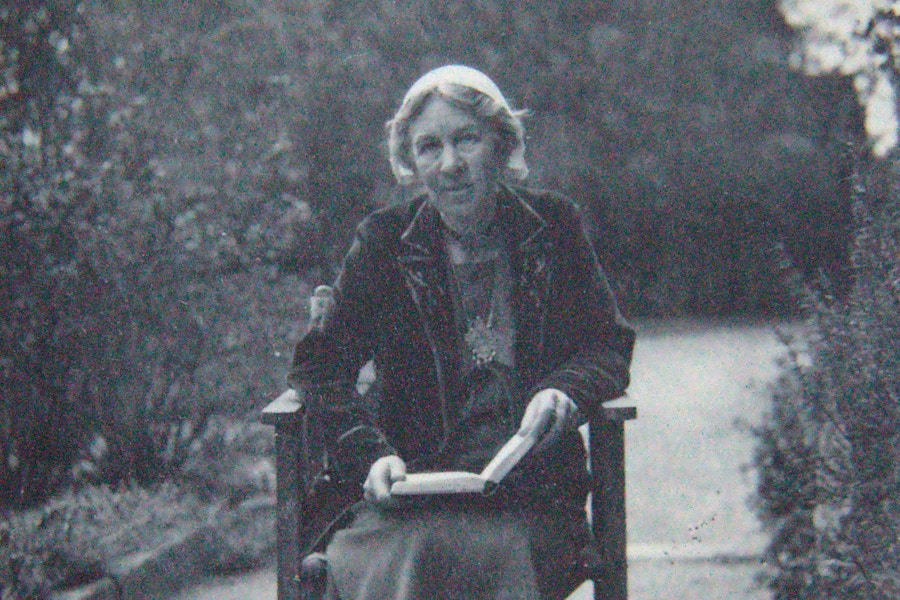Each Olympic Games, we see one flame light another as the Olympic torch traverses the globe. This flame image was utilised by the Catholic philosopher, Baron Friedrich von Hügel (1852−1925), who argued that in our spiritual lives, “one torch lights another.”1 In saying these words, he was referring to his spiritual director, the renowned Parisian, Abbé Huvelin, along with seventeenth-century spiritual writers such as de Sales, Grou and Fénelon. But the Baron himself was also a torch that profoundly impacted several writers in Christian spirituality. Eugene Peterson (1932−2018) described von Hügel as “the wisest of masters,” a “significant voice” guiding him into a “persevering, lifelong obedience in following Jesus.”2 Similarly, Evelyn Underhill (1875−1941) wrote of the Baron, “I owe him my whole spiritual life.”3 So how did von Hügel impact Peterson and Underhill and what can we learn?
Peterson tells us that von Hügel supplied him with “metaphors” that provided a “shaping influence” on his life.4 One such image is prayer without adoration as like a “triangle with one side left out.”5 The remedy for this, according to von Hügel, is the spontaneous habit of small exclamations of adoring words to God.6
Another vivid image from von Hügel is the formation of metamorphic rock as an illustration for union with Christ recreating the entire person. As an amateur geologist, the Baron knew how heat and pressure can slowly transform rock. He described how God similarly “permeates” and changes the “very substance of our humanity” through a “divine infiltration.”7 Christ’s indwelling produces a slow, transformative effect on our heart, will, head, emotions, body. Our entire person is changed. It’s not simply intellectual knowledge lodged like a sedimentary layer on the surface.
The Baron also provided metaphors concerning spiritual practices. Fifteen minutes of daily spiritual reading was like “letting a very slowly dissolving lozenge melt imperceptibly in your mouth.”8 This slow, meditative reading of the Psalms and Gospels, plus spiritual classics like Augustine’s Confessions and à Kempis’ Imitation of Christ was one of the Baron’s repeated recommendations.
Another foundational image is von Hügel’s conceptualization of the three Elements of Religion: the “Intellectual Element” (theological, rational), the “Mystical Element” (experiential, devotional) and the “Institutional Element” (church involvement, sacraments, community and tradition). According to the Baron, all three Elements are essential for a balanced, rich spiritual life; to omit one Element diminishes our response to God.
When Underhill came to the Baron, she was an intellectual who had already published several books and had mystical experiences. Von Hügel immediately recognized her weakness in the “Institutional Element,” so he encouraged Underhill into regular church involvement, the Eucharist, visiting the poor and Christocentric devotion. Before Underhill came under his spiritual direction, she’d had no personal encounter with Christ. But she reflects, “somehow by his prayers or something, he compelled” me to experience Christ. “It took about four months – it was like watching the sun rise very slowly – and then suddenly one knew what it was.”9 Afterwards Holy Communion became more and more wonderful. The Baron had emphasized to Underhill the importance of the stimulation of our senses for our spiritual growth. Partaking of the Eucharist would awaken her soul for it’s the “basis of all real sanctity.”10
We see echoes of the Baron in Underhill’s “motherhood of souls” through spiritual direction and retreat leading. Underhill’s own neglect of church made her passionately encourage her directees to become part of a worshipping community so their devotional lives could be “steadied.”11 Underhill described the Eucharist as the “heart” of Christian “worship” so it was held each morning on her retreats.12 “Leisurely” meditation on the Psalms as “daily food” was also encouraged.13 The Baron recognised silence as “fundamental” in the spiritual life and stressed Underhill learn “interior silence.”14 Underhill came to view silence as the “very heart” of her retreats and essential to cut distractions, enable inner stillness and help retreatants hear God’s “whisper,” and “attend” to what they usually miss.15
When the Baron spoke of one torch lighting another, he added, “It is best to learn from others; it gives a touch of creatureliness.”16 Creatureliness was the term von Hügel used for authentic humility – fully recognising our true size as tiny creatures before a mighty Creator. This creatureliness also reminds us to be humble enough to learn from those who have gone before us. Our work is simply a tiny contribution in a long conversation. We’re all just little — fellow pilgrims, worshipping the same triune God who is majestic and “Other” and so worthy of our adoration.
So who might be the “torches” vividly enlightening our own lives? Phrases from Underhill and von Hügel’s letters and retreat talks keep resonating in me. Having studied under Eugene Peterson and corresponded with him over years, I find myself quoting from his writings and memories of conversations with him when lecturing and leading retreats. “One torch lights another!” We are truly surrounded by a great “Cloud of Witnesses” — vibrant examples of the life of faith who help us endure and run the race.
- Gwendolen Greene, ed. Letters from Baron Friedrich von Hügel to a Niece (London: Dent, 1927), xv. ↩︎
- Eugene Peterson, “Foreword,” in The Spiritual Formation of Evelyn Underhill, Robyn Wrigley-Carr (London: SPCK, 2020), xv. ↩︎
- Charles Williams, ed. The Letters of Evelyn Underhill (London: Longmans, Green, 1943), 196. ↩︎
- Peterson, “Foreword” in Spiritual, x. ↩︎
- Greene, ed. Letters, xx. ↩︎
- Greene, ed. Letters, 4. ↩︎
- Maurice Ndoncelle, Baron Friedrich von Hügel: A Study of his Life and Thought (New York: Longmans, 1937), 92 – 3. ↩︎
- MS VII.143.196a‑b, St Andrews University Library Special Collections. ↩︎
- Margaret Cropper, The Life of Evelyn Underhill (Woodstock: Skylights Paths Publishing, 2003), 102. ↩︎
- Greene, ed. Letters, 187. ↩︎
- Williams, ed. Letters, 165. ↩︎
- Evelyn Underhill, Light of Christ (London: Longmans, Green, 1944), 88. ↩︎
- Williams, ed. Letters, 182. ↩︎
- Greene, ed. Letters, 46, xx. ↩︎
- Evelyn Underhill, The Ways of the Spirit, ed. Grace Adolphsen Brame (New York: Crossroad, 1994), 50; Underhill, Light, 25. ↩︎
- Greene, ed. Letters, xv. ↩︎
Text First Published November 2022 · Last Featured on Renovare.org November 2022


